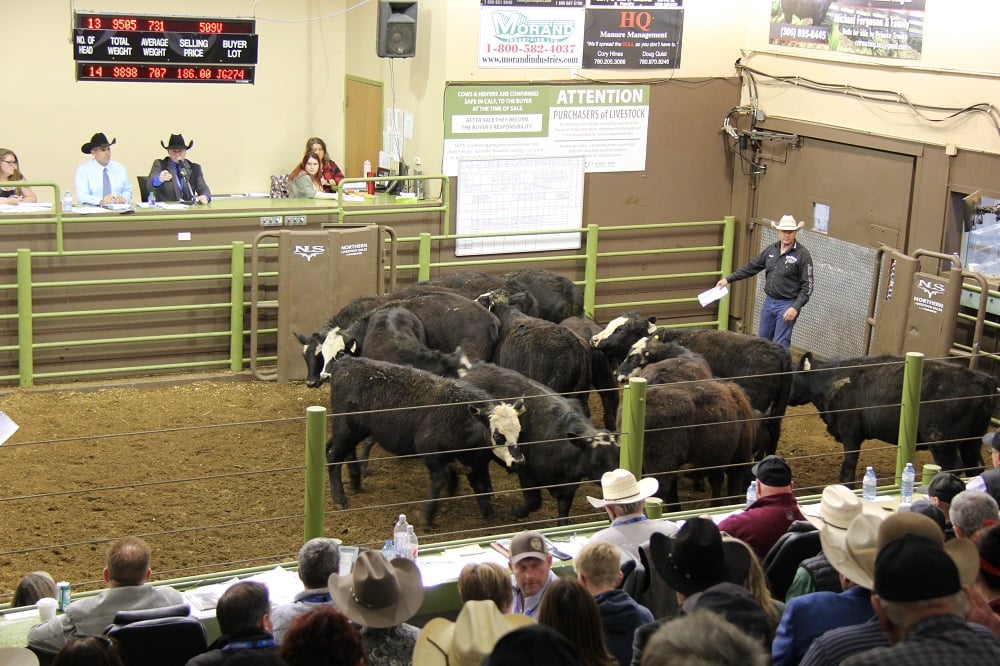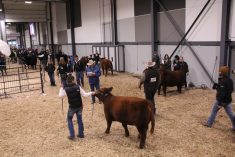The April 2024 live cattle futures reached a contract high of $199.82/cwt on September 15. Since then, the cash and futures markets have been grinding lower and at the time of writing this article, the April live cattle contract was at $175.50/cwt.
I’ve received many calls from feedlot operators inquiring about market direction for the first quarter of 2024. Many analysts and media commentaries have been describing the market as fundamentally tight. This may be a wake-up call for many, but western Canadian and U.S. fed cattle supplies are not tight. In the U.S., cattle on feed 150 days or more are actually above year-ago levels heading into January. Market-ready supplies of fed cattle in Western Canada will likely be similar to year-ago levels during the first quarter of 2024.
Let’s look at the U.S. situation first. There are two main factors to consider. U.S. feedlot placements during May, June, September and October 2023 were actually above year-ago levels. Therefore, fed cattle supplies of steers and heifers during October, November and December 2023 were similar to the final quarter of 2022. We can add up the total number of market-ready supplies from the placement data on the cattle-on-feed reports.

Second, the U.S. slaughter is down from last year. During September 2023, fed cattle marketings were down 11 per cent from September 2022, and during October 2023, fed cattle marketings were down three per cent from last year. Given the current slaughter pace, the November slaughter will also finish sharply below November 2022 and we can assume this trend will continue through December. The U.S. packer has restrained or lowered slaughter numbers. While steer and heifer market-ready supplies are similar to last year, the October slaughter was down an estimated 180,000 head from October 2022; the November slaughter will likely finish 190,000 head below last year while the December slaughter is expected to be down 120,000 head from December 2022.
Read Also

Cattle Market Summary
Break-evens, cow and calf prices, plus market summaries courtesy of Canfax and Beef Farmers of Ontario. Cost of Production September…
There will likely be 200,000 head of steers and heifers that should have been processed in the final quarter of 2023 but will instead be processed in the first quarter of 2024. The U.S. beef cow slaughter is also down by 60,000 head per month so the year-over-year decline in slaughter is not all due to the drop in steers and heifers.
For January, February and March 2024, U.S. market-ready fed cattle supplies of steers and heifers will be similar to the first quarter of 2023. Again, we can look at the placements by weight category to project the number of cattle that will be ready in the first quarter. Cattle that have been on feed 150 days or more are above last year’s total.
We can do the same exercise for Alberta and Saskatchewan. If we add up the cattle that should be finished in the first quarter of 2024, fed cattle supplies will be similar to the first quarter of 2023.
Cattle and beef prices are at historical highs. At historical highs, markets ration demand. In the beef sector, this occurs in two fashions. First, U.S. beef exports are down from last year. Second, U.S. retail beef prices are higher than year-ago levels but pork and chicken prices are below year-ago levels. The retail beef market also will have smaller packages with a higher cost per pound. We want to remind readers that U.S. consumer spending is expected to contract by one per cent in the first quarter of 2024.
We’re seeing a market that is rationing demand while total demand is declining. At the same time, supplies of market-ready steers and heifers are above year-ago levels. This comes when the packer continues to restrain the slaughter. This overall environment can result in a severe price drop. More supplies and lower demand result in a lower price.

















